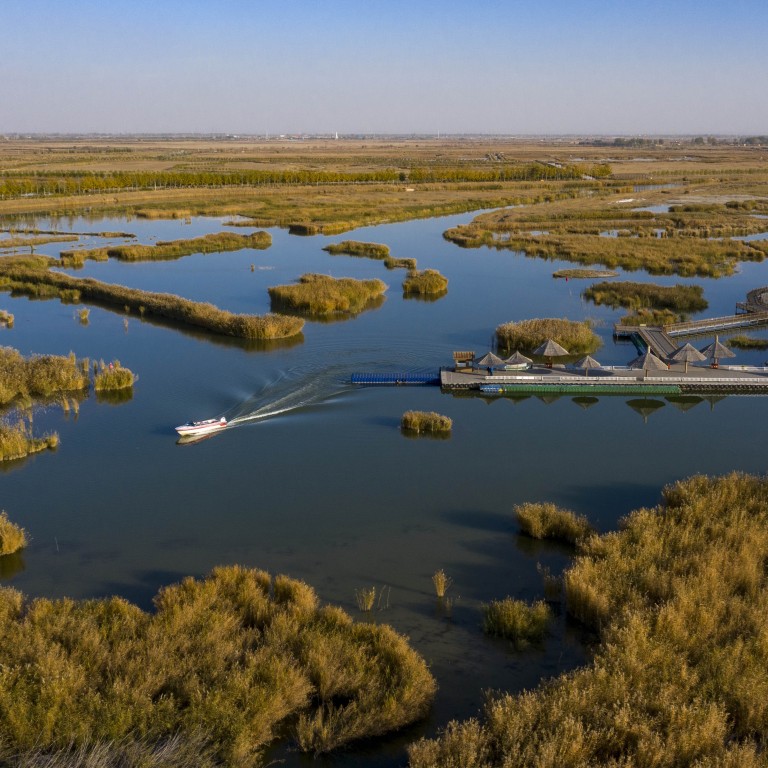
Pollution scandal near China nature reserve at Tengger desert’s edge
- Historical sites a danger to local groundwater, environmental group says
- Newly discovered dumping grounds in same area contaminated in previous national scandal
China’s environment ministry has launched a formal investigation into newly discovered pollution sites on the edge of the Tengger desert in the northwestern Ningxia Hui autonomous region, five years after the area came to national attention as a favoured dumping ground for untreated waste water.
Inspectors found 14 new polluted sites, covering a combined total area of 120,000 square metres, according to a report on Sunday by the local Communist Party newspaper Ningxia Daily. They are believed to be previously undiscovered historical dumping sites.
The news sparked immediate attention online, as the previous pollution had been so severe Chinese President Xi Jinping issued three specific orders to tackle the problem and more than 30 local cadres were punished or removed from office for their part in the dumping.
The latest sites were discovered near a national nature reserve in Zhongwei, a prefecture-level city in the western part of Ningxia, according to a Beijing-based environmental group which discovered several dumping sites inside a fast-growing forest on the edge of the desert.
China launches environmental probe in pollution-prone Hebei
The Beijing Fengtai Origin Enthusiast Environment Research Centre NGO said on Thursday, on its WeChat account – China’s popular online messaging app – that the sites lacked anti-leakage protection and posed a threat to local groundwater.
A volunteer for the NGO, surnamed Zhang, said he and his colleagues discovered the pollution sites during a research trip to the region in October. He refused to give his full name because of the sensitivity of the issue.
“It’s a historical problem,” he said. “The dumping sites are well hidden and hard to find.”
The black, pitch-like pollutant found by the group’s volunteers is a waste product from a papermaking mill that operated in the area from 1998 to 2004, according to the Ministry of Environment and Ecology.
The company, Ningxia Meili Paper Group, did not have a waste collection system during that period, so a large portion of its untreated waste water was dumped in the desert, the ministry said. In 2015, the company shut down its pulp production line and reorganised into another company. Since then, it has stopped producing the pollutant.
Young voices in China’s environmental wilderness struggle to be heard
In 2014 Beijing News reported that companies in the nearby industrial estates were dumping ink-black waste water into evaporation ponds. Once the water evaporated, the remaining residue was scooped out and buried directly in the desert.
The State Council, under Xi’s instructions, later set up an inspection group requiring local authorities and industrial estates to clean up the dumping sites. Controlling pollution has since been set by Xi as one of the “three critical battles” for the government, along with alleviating poverty and reducing economic risks.
The Zhongwei city environment bureau opened an investigation into the newly discovered sites on Sunday.

